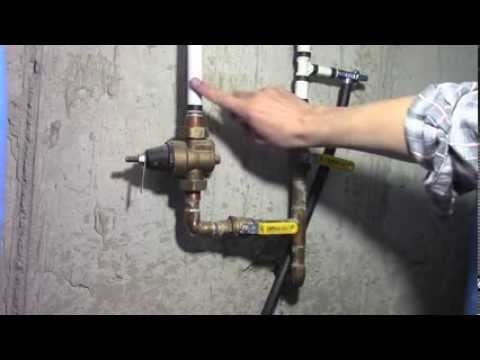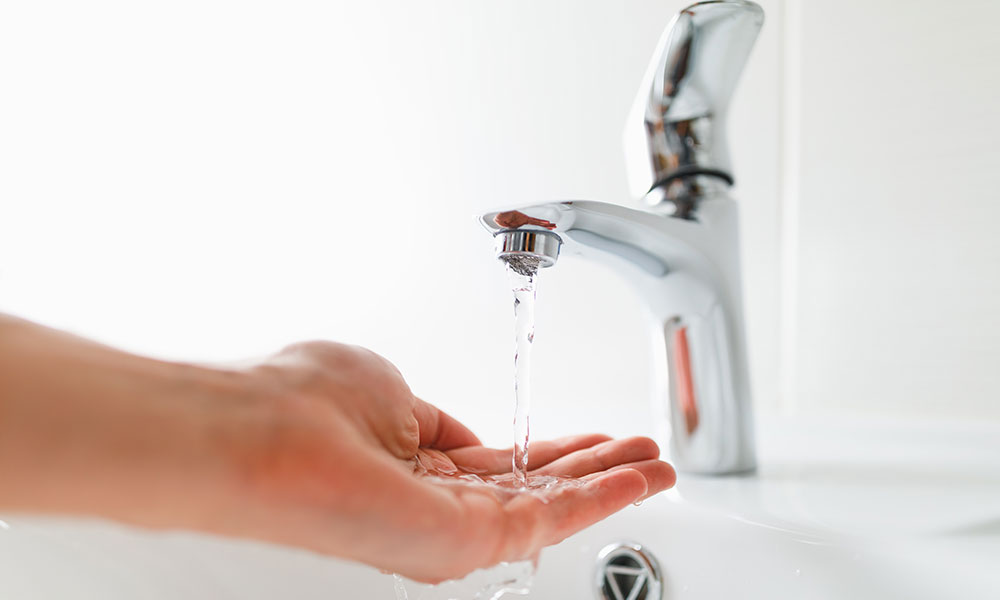Our Guide to Fixing Low Water Pressure in Your Home
Our Guide to Fixing Low Water Pressure in Your Home
Blog Article
Everyone seems to have their private perception on the subject of Low Water Pressure in the House?.

Low tide stress in your house can be an irritating trouble, impacting everything from bathing to washing dishes. If you're experiencing weak water flow, there are a number of feasible reasons and options to check out. In this overview, we'll talk about common factors for low water pressure and functional actions to attend to the concern successfully.
Intro to Low Tide Stress
Low water pressure takes place when the circulation of water from your taps, showers, and various other fixtures is weak than typical. This can make everyday tasks more difficult and much less effective. Comprehending the sources of low water pressure is important to locating the appropriate option.
Common Root Causes Of Low Tide Stress
Pipe Obstructions
With time, pipes can come to be clogged with natural resource, debris, or debris, limiting the circulation of water. This is an usual problem in older homes with galvanized steel pipelines.
Rust
Rust within pipes can cause leakages and reduced water pressure. Corrosion buildup can tighten water circulation, especially in maturing plumbing systems.
Faulty Stress Regulators
Stress regulatory authorities are in charge of keeping regular water pressure in your home. If they malfunction, it can lead to low tide stress or uneven circulation throughout the house.
Municipal Water Issues
Occasionally, the issue lies outside your home. Metropolitan supply of water issues, such as main line leaks or maintenance job, can momentarily decrease water pressure in your area.
How to Diagnose Low Tide Stress
Examining Taps and Fixtures
Begin by examining the water pressure at various taps and fixtures throughout your home. If the problem is separated to particular locations, it might suggest localized troubles.
Inspecting Pipelines
Check visible pipes for indicators of leakages, rust, or clogs. Take note of any kind of unusual audios, such as knocking or rattling pipelines, which can show issues within the plumbing system.
Consulting with a Plumber
If you're not able to pinpoint the source of low water stress, consider working with an expert plumber to perform a comprehensive assessment. They can identify underlying issues and suggest proper services.
DIY Solutions to Fix Low Tide Pressure
Cleansing Aerators and Showerheads
Natural resources can build up in aerators and showerheads, decreasing water circulation. Eliminate and clean these components on a regular basis to enhance water pressure.
Flushing Water Heater
Sediment accumulation in the hot water heater can limit flow and lower efficiency. Flushing the tank regularly assists remove sediment and keep optimum performance.
Examining Stress Regulatory Authority
Ensure that the stress regulatory authority is functioning appropriately. Changing or replacing the regulatory authority can assist bring back appropriate water stress throughout your home.
Clearing Up Clogs in Pipeline
For minor clogs, try using a plumbing snake or chemical drain cleaner to clear blockages in pipelines. Beware when utilizing chemicals and follow security standards.
When to Call a Professional Plumber
If do it yourself initiatives stop working to resolve the concern or if you believe considerable plumbing problems, it's ideal to look for support from a qualified plumber. They have the experience and tools to attend to complex concerns safely and successfully.
Preventive Measures to Maintain Water Stress
Normal Upkeep
Arrange regular maintenance for your plumbing system to stop concerns such as corrosion, leakages, and obstructions. Resolving minor issues early can help avoid even more significant fixings later on.
Installing a Pressure Booster
Take into consideration setting up a stress booster pump to enhance water stress in locations with consistently low flow. This can be specifically valuable for multi-story homes or homes with high-demand fixtures.
Tracking Water Use
Be mindful of water use behaviors and prevent ill-using the plumbing system. Straightforward adjustments, such as incredible showers and washing tons, can assist preserve appropriate water pressure.
Verdict
Taking care of low tide stress can be discouraging, yet recognizing the underlying reasons and executing ideal services can restore optimum flow throughout your home. Whether it's cleansing aerators, checking pipes, or seeking advice from a plumber, taking proactive steps can make sure a consistent supply of water for your daily requirements.
How to Fix Low Water Pressure In Your Home
Municipal Water Supply Issues
Scheduled maintenance, high demand, and water main breaks are all potential causes for low water pressure within a city or county’s water lines. While there’s not much you can do to personally fix a problem with your city or county’s water supply system, you can play a big role in documenting the issue and alerting those who can.
How to fix it:
Ask your neighbors if they are experiencing any issues with low water pressure. If multiple homes are affected, it’s likely related to the city’s water line.
Contact the local Water Authority to see if there is any maintenance taking place that might be affecting your supply. Also let them know of your specific issues. If other homeowners report the same issues, they’ll know that there could be a larger issue to look into.
Faulty Fixtures
A damaged or clogged shower head, faucet or appliance is the first thing we’d suggest checking, especially if low water pressure appears to be isolated to a specific area of your home.
How to fix it:
First, turn off the main water supply to your home.
Check the affected appliances for build-up or debris. In the case of a faucet, you can simply unscrew the aerator at the tip of the faucet. Showerheads should be fully detached from the water pipe.
While the appliances are detached, you may want to check the water supply to determine if the fixtures were in fact the issue.
To clean, soak the showerhead or aerator in vinegar and brush off any visible debris.
Reattach the fixtures and check the water pressure again. If it is still low, there is likely a deeper issue at hand, which can be determined by a professional plumber.
Pipe Obstructions
Mineral deposits, rust or other debris within water pipes can lead to blockages or corrosion over time.
How to fix it:
When you think of a clog, you probably think of a drain clog. While there are many DIY solutions to clearing a drain, clogs in a water pipe will almost always require the help of a professional plumber. A plumber will be able to locate the affected pipe and clean out any debris or mineral deposit buildup. In severe cases, the pipe may need to be replaced. Your plumber might also recommend a water softening system to remove the minerals from your home’s water supply that can contribute to pipe blockages over time.
Plumbing Leak
Undetected water line leaks can divert water away from your residential pipes, reducing the water pressure in your fixtures.
How to fix it:
Check your water meter by turning off all water sources and monitoring the meter for any movement, which could be a clear indicator of a potential leak.
Check all visible pipes for signs of leaking, including water stains, active dripping or damp spots around the pipe.
Inspect fixtures, including faucets and showerheads, for any drips.
Test the pressure but recording the pressure with the main water valve shut off. Leave off for a few hours and test again. A significant drop in pressure is a clear sign of a leak.
https://kiddcoplumbing.com/plumbing-blog/how-to-fix-low-water-pressure/

How to Fix Low Water Pressure In Your Home
Municipal Water Supply Issues
Scheduled maintenance, high demand, and water main breaks are all potential causes for low water pressure within a city or county’s water lines. While there’s not much you can do to personally fix a problem with your city or county’s water supply system, you can play a big role in documenting the issue and alerting those who can.
How to fix it:
Faulty Fixtures
A damaged or clogged shower head, faucet or appliance is the first thing we’d suggest checking, especially if low water pressure appears to be isolated to a specific area of your home.
How to fix it:
Pipe Obstructions
Mineral deposits, rust or other debris within water pipes can lead to blockages or corrosion over time.
How to fix it:
When you think of a clog, you probably think of a drain clog. While there are many DIY solutions to clearing a drain, clogs in a water pipe will almost always require the help of a professional plumber. A plumber will be able to locate the affected pipe and clean out any debris or mineral deposit buildup. In severe cases, the pipe may need to be replaced. Your plumber might also recommend a water softening system to remove the minerals from your home’s water supply that can contribute to pipe blockages over time.
Plumbing Leak
Undetected water line leaks can divert water away from your residential pipes, reducing the water pressure in your fixtures.
How to fix it:
https://kiddcoplumbing.com/plumbing-blog/how-to-fix-low-water-pressure/
I'm certainly very drawn to 9 Reasons for Low Water Pressure in Your House and I hope you appreciated my blog entry. Are you aware of somebody who is interested in the topic? Feel free to share it. I appreciate reading our article about 4 Ways to Troubleshoot Low Water Pressure.
Top Article Report this page